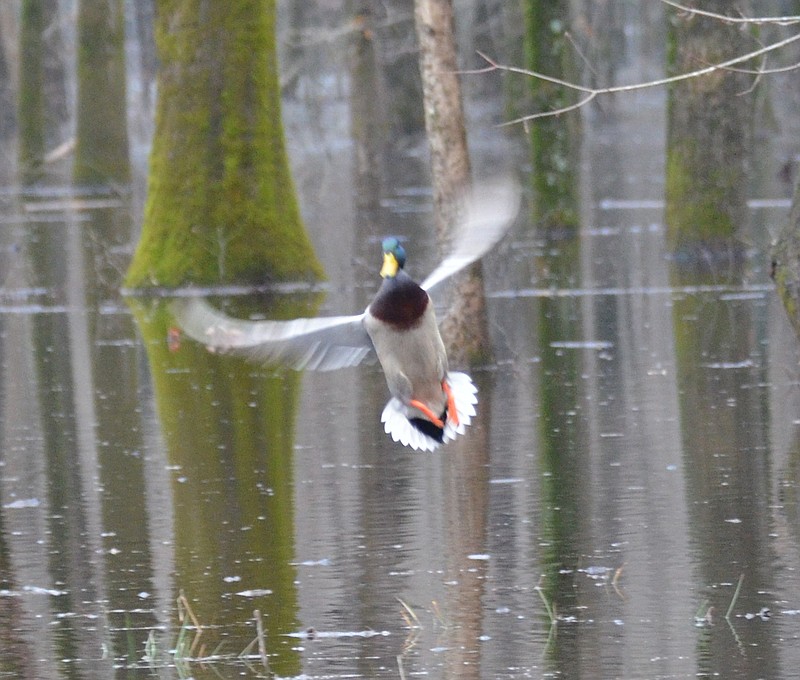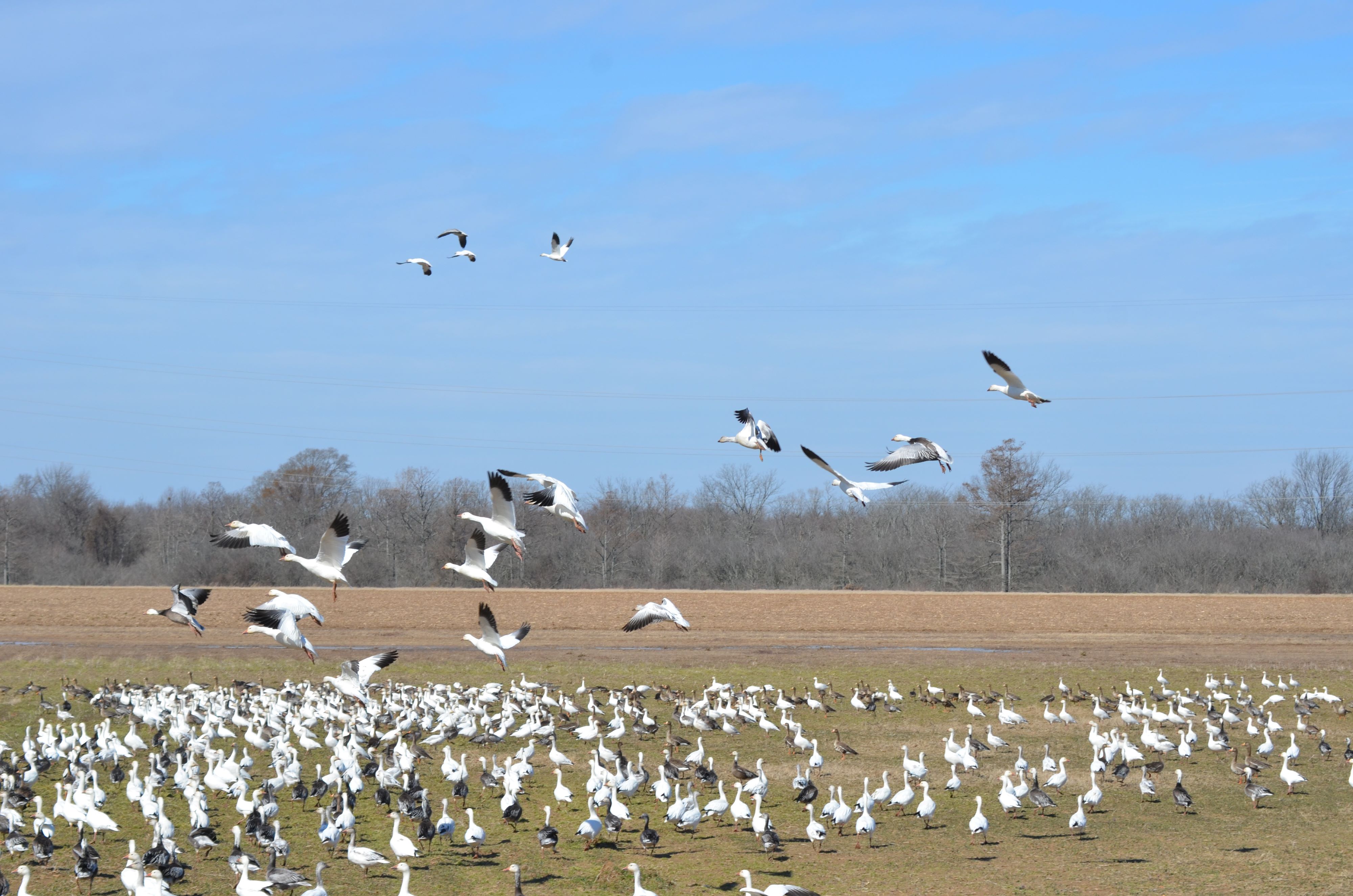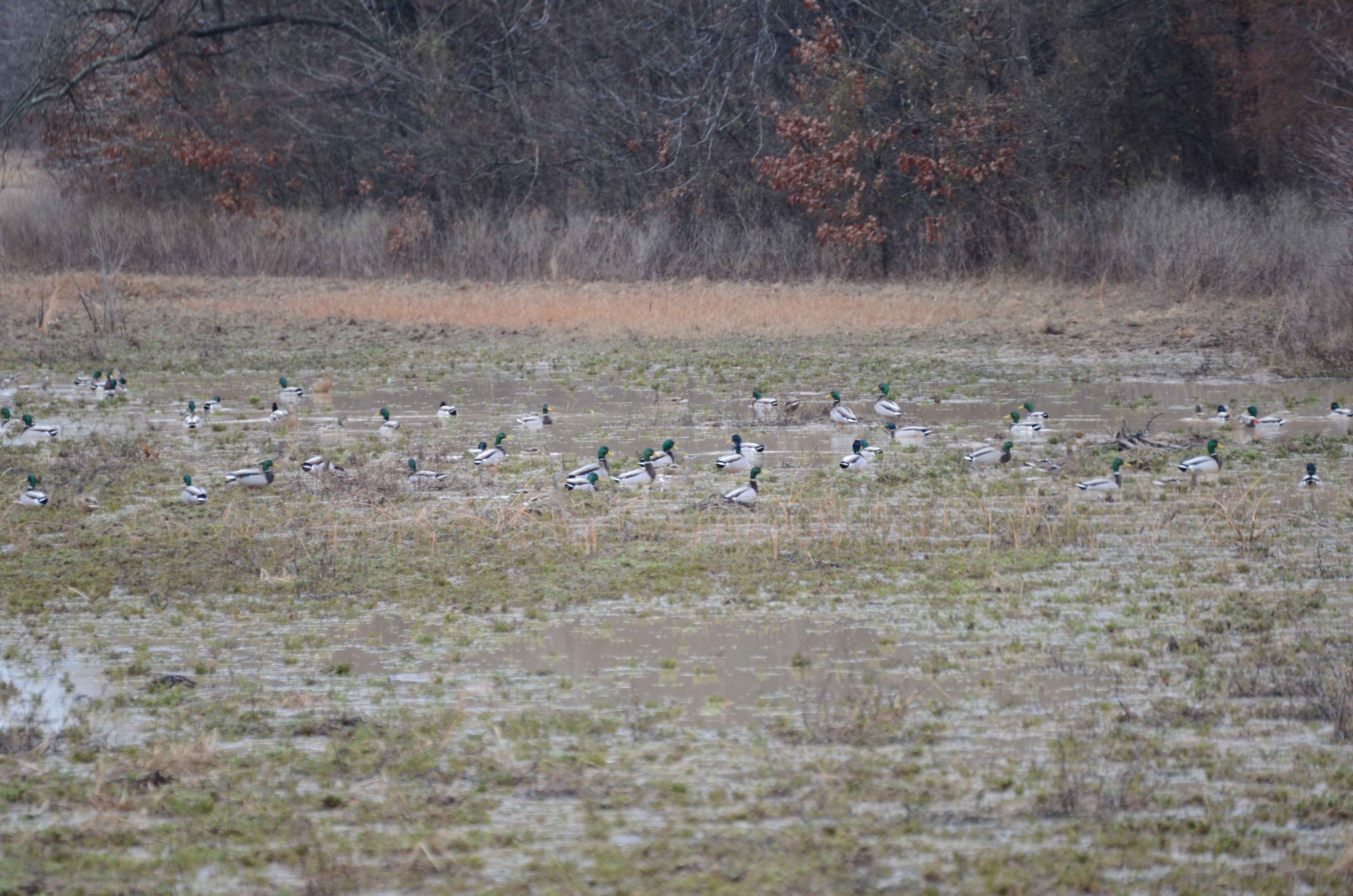This season's first waterfowl survey is giving waterfowlers a reason to celebrate.
The survey consists of Arkansas Game and Fish Commission biologists Jason Carbaugh, Jason "Buck" Jackson and Alex Zachary flying over three distinct flyway regions of the state, the Mississippi Alluvial Valley (Delta), Arkansas River Valley and southwest Arkansas.
The survey -- the first of three annual aerial duck surveys -- was completed in mid-December.
Rocky Thornbird sub-contracts his single-engine Cessna 210 Centurion to fly AGFC biologists on the surveys.
"In my 25 years of working with Game and Fish, this was the most difficult one we've ever done due to the poor weather," Thornbird said. "What normally takes only a few days stretched out to nearly two weeks. We conduct our observations from 500 feet elevation and there were consistently low, scudding clouds between 300 and 700 that just wouldn't allow us to see the birds on the ground."
The results of their observations, however, prove encouraging for Arkansas waterfowlers. The findings are released in an aerial waterfowl survey report.
"Transect-based surveys in the Delta estimated 1,136,558 total ducks, 480,846 of which were mallards and 22,860 ducks in the Arkansas River Valley, including 7,383 mallards," according to the latest document. "Biologists performing cruise surveys in southwest Arkansas reported an estimated 24,574 ducks with 4,487 mallards. Arctic goose population estimates totaled 1,275,732 light (lesser snow and Ross's) geese and 181,356 greater white-fronted geese in the Delta. Biologists noted over 10,000 light geese and 3,000 greater white-fronted geese in southwest Arkansas, a notably high number for that region.
"The Delta mallard population estimate was about 100,000 ducks below the 2009-2022 long-term December average but the highest December estimate since 2018. Total duck population estimates were nearly identical to the long-term average. Typically, mallards account for about 52 percent of all ducks in the Delta during December surveys; mallards accounted for 42 percent of all ducks in the Delta during this survey. The highest mallard and total duck estimates were in the Bayou Meto-Lower Arkansas, Black-Upper White and Cache survey zones. About 75 percent of all ducks, including mallards, were in these three survey zones," according to the document.
"Arkansas River Valley mallard estimates were a bit below average, while total duck estimates were near average. The highest mallard and total duck estimates were in the Pt. Remove-Plumerville survey zone, with estimates in the Holla Bend zone a distant second," according to the document.
AGFC's Luke Naylor was recently promoted from waterfowl program coordinator to head of AGFC's Wildlife Management Division.
"This fall has been relatively dry, with the first substantial rainfall occurring toward the end of this survey period," Naylor said. "Recent rains provided additional habitat, but only time will tell if this results in sustained habitat provision. The effects of the Arctic blast will be interesting to watch in the coming days. Staff will conduct the annual midwinter waterfowl survey the week of Jan. 2."
Reports from hunters indicate substantial harvest numbers in limited areas during the first nine-day split that occurred from Nov. 19-27. The places where duck numbers were notable remained limited to flooded fields artificially pumped up from groundwater before opening day. During the heavy rains from Dec. 5-13, surface water accumulated in the areas previously left dry, spreading out the available birds by giving them far more habitat to occupy. In addition, the 8-plus inches of rainfall during that time frame caused AGFC's management plan water levels for Bayou Meto Wildlife Management Area to blow right past the desired 178.6 to peak around 180.3, nearly a foot above target. The abundant rains raised the entire area to full pool. This greatly contributed to the high mallard count in the flooded timber indicated by the aerial survey.
As of late December, Bayou Meto water levels are falling.
"We have real time USGS gauges on all Bayou Meto water control structures so hunters can log into river.guages.com and watch exactly what's going on from day to day," Naylor said.
During the second split beginning Dec. 10 and terminating Dec. 23, hunters reported fewer geese in the fields than seen earlier in the season. Most waterfowlers hunting flooded fields during the first split stated seeing as many as 50 to 60 dead or obviously sick snow, blue and Ross geese in every 40-acre field. During the second 13-day split, geese affected by avian flu appeared almost nonexistent.
One professional guide, Devon Carr who hunts in Jefferson County, attributed this to the fact that the large concentrations of geese previously occupying flooded rice fields had basically eaten out that food source and now moved on to new ground.
"There are no positive cases of avian flu detected among hunting dogs at this point." Naylor said.
"We don't have the [personnel] or capability to collect samples from all the sick birds out there but we encourage hunters to report sightings of infected birds when and where they encounter them. The public can certainly cover a lot more ground than we can. All this information is kept track of and may be accessed at wildlife.health@agfc.ar.gov," he said.
To be cautious, Naylor repeated the suggestions of public health officials.
"All agencies publish the same protocols. Do not interact with sick or dead waterfowl. It is recommended hunters wear gloves and don't eat, drink or smoke while cleaning their harvest," he said. "Always cook ducks and geese to 165 degrees to ensure elimination of all live pathogens."
The third and final duck season split started Dec. 26 and runs through the end of January. In an effort to help reduce pressure on the ducks and competition among hunters, Arkansas resident license holders only may duck hunt in WMAs from Jan. 6-20.


